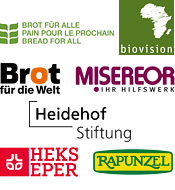News
21.12.2015
New report celebrates African rural women as custodians of seeds and knowledge

African rural women play a critical role in evolving and maintaining the continent’s diverse and climate-resilient agricultural systems but their knowledge and status is increasingly being undermined. This is the message of a new report published by the African Biodiversity Network, Gaia Foundation and African Women's Development Fund to celebrate the important work of women as custodians of seed and nutritional food, medicine and biodiversity, and as spiritual, cultural and community leaders. “Today in Africa, it is small farmers - who are mainly women - who still produce 80% of the food on just 14.7% of the agricultural land, despite growing pressures,” says Liz Hosken, Founding Director of The Gaia Foundation and lead author of the report. According to the authors, the present global corporate scramble to control Africa’s rich heritage of minerals and fossil fuels, water and agricultural lands, seeds and food systems threatens to destabilise the continent and create more conflict, with women suffering most. The report puts a special focus on womens’ remarkable relationship with seed. “At the heart of this relationship between Africa’s women farmers and seed is a legacy of traditional knowledge that we cannot afford to lose. It is a legacy that has been and continues to be undermined by issues including land grabbing and disempowering seed ‘harmonisation’ laws,” writes Theo Sowa, Chief Executive of the African Women's Development Fund, in a foreword to the report. Many decades of targeting men for commercial interests promoting cash crops for foreign markets has further side-lined women, who have become increasingly invisible despite their critical role in meeting the diverse nutritional, medicinal and cultural needs of the family and the community, she warned. The report calls for both practical and policy support for rural women, their communities and their social movements in Africa, and for a profound and urgent shift in agricultural and investment policies across the continent. In particular, policies and practices should enhance women’s participation; value and recognise women’s knowledge; and enable women as well as men farmers to participate in decision-making processes in agriculture, food production, land and governance. (ab)
17.12.2015
Wildlife decline threatens UK biodiversity and agriculture, study finds

Britain’s biodiversity is in an increasingly fragile state, with species that pollinate crops or fight pests declining rapidly, putting the nation’s food production at risk. This is the result of a new study published on 8 December in the journal Nature Communications. Researchers at the University of Reading and the Centre for Ecology and Hydrology carried out a study which brings together tens of millions of wildlife records spanning 40 years. They found that the composition of species communities is changing rapidly through drivers such as habitat loss and climate change, with potentially serious consequences for the resilience of ecosystem functions. “There have been many efforts to track the changing prospects of wildlife, but this is the biggest and most comprehensive report ever assembled for any country in the world,” said Dr Tom Oliver from the University of Reading who led the research. “The picture that emerges is of an increasingly fragile system, particularly in species that do vital jobs for humans. Unless efforts are made to reverse some of these declines, we face a future where we will be less confident that we can effectively grow our food.” The scientists analysed trends in the frequency of 4,424 species across the country between 1970 and 2009, using data from thousands of trained volunteer recorders across the country. The record covered 22 broad species groups - such as bees, dragonflies, grasshoppers, ladybirds, plants and mosses. The scientists grouped the species into key ecosystem functions they provide - pollination, pest control, cultural value, decomposition and carbon sequestration. While all groups saw declines in native species, the population of animals providing decomposition and carbon sequestration remained relatively stable as declines are offset by new species arriving into the country. However, animals carrying out other vital jobs for farming by providing pollination and pest control suffered an alarming decline which can neither be offset by native species increasing in numbers nor by the arrival of new species to Britain. One example is the banded hoverfly Syrphus ribesii, which is important for pest control since it feeds on aphids and also pollinates crops and wildflowers. Professor James Bullock, who co-led the work, said: “While this analysis sends us a warning, concerted conservation efforts may allow us to halt these declines. Conservation actions, such as wildlife-friendly farming, can avoid the loss of biodiversity and the resulting erosion of the pollination, pest control and other benefits we derive from nature.” (ab)
15.12.2015
U.S. sales of antibiotics for farm animals up 22% since 2009
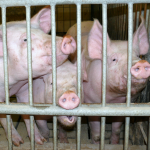
U.S. sales of antibiotics used in farm animals rose at an alarming rate over the last five years, the Food and Drug Administration said on Thursday, fueling concerns about risks to humans from antibiotic-resistant bacteria. According to a new report, sales of medically important antimicrobials used in food-producing animals in the U.S. increased 3% between 2013 and 2014 and sales are up by 22% since 2009, when the agency began reporting the figures. For one critically important class of drugs, cephalosporins, which are often used to treat ear and urinary tract infections, sales increased by 57% from 2009 to 2014, despite FDA placing restrictions on certain uses of them in 2012. Public health advocates, scientists and civil society organisations have criticised the non-therapeutic use of antibiotics in livestock, arguing that it is fueling the rise of antibiotic-resistant bacteria. The increased sales of antibiotics approved for use in livestock in 2014 are “disgraceful since it came after the FDA issued voluntary guidance they claimed would actually reduce the use of antibiotics in agriculture,” U.S. Rep. Louise Slaughter, a Democrat of New York, was quoted by Reuters. The FDA guidelines were released in 2013 with the aim of convincing drug makers and agricultural companies to phase out the use of antibiotics as a growth enhancer in livestock. The agency said the antibiotics could still be used to treat illnesses in animals raised for meat, but should otherwise be pared back by December 2016 under a program to keep them out of the human food supply. According to a report published by the United States Department of Agriculture in November, the share of broilers raised without antibiotics except for disease treatment rose from 44 to 48% between 2006 and 2011, which means that the majority of broilers were still given antibiotics for growth promotion. The use of antibiotics is also widespread on beef and cow-calf operations: In 2011, more than three-quarters of feedlots with at least 1,000 head provided antibiotics in feed or water, where the purpose is often growth promotion, USDA reported. (ab)
10.12.2015
EPO upholds patent on conventionally bred wrinkled tomato
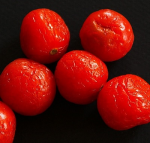
The European Patent Office (EPO) has backed a controversial patent on the “wrinkled tomato” derived from classical breeding processes: On Tuesday, the Technical Board of Appeal confirmed patent EP1211926, granted to the Ministry of Agriculture of Israel already in 2003, with only minor changes to the wording. The patent covers a tomato that has a reduced water content and is thus better suited to the production of ketchup. According to the patent claim, the “tomato fruit is characterised by a capability of natural dehydration while on a tomato plant”. After the tomato is ripe, its skin starts wrinkling but the fruit is usually not affected by microbial spoilage. In 2004, Unilever filed an opposition on the grounds that the patent did not fulfil patentability requirements since the the tomato was obtained with conventional methods which are not patentable. Article 53 (b) of the European Patent Convention prohibits patents on plant varieties as well as on “essentially biological processes for breeding”, which do not involve genetic engineering. However, the EPO is continuing to grant patents on conventionally bred plants, bypassing existing prohibitions with its interpretation of the law. In 2015, for example, Swiss agrochemical giant Syngenta was granted a patent on a seedless pepper derived from conventional breeding as well as on a tomato with a higher content of compounds called flavonols which are known for their health benefits. EPO’s patent granting on conventionally bred plants is heavily criticised. Non-governmental organisations warn that food production is becoming increasingly dependent on just a few big international companies such as Monsanto, Syngenta and Dupont, that file more and more patents on food plants. Nevertheless, EPO’s Enlarged Board of Appeal ruled in March 2015 in a long-awaited decision on the precedent cases of broccoli and tomato, that plants obtained by essentially biological processes are patentable. “It is now up to politicians to show they can succeed in the fight against the well-organised interests of the patent business”, said Christoph Then for the international coalition “No Patents on Seeds!”, which is backed by hundreds of organisations. “The EPO, the patent attorneys and big corporations are all benefitting from these patents, but the negative consequences concern society as a whole.” In a report published on Monday, the coalitions presents political measures that should be taken to prevent patents on plants from conventional breeding. “Around 120 such patents have already been granted. These patents are on the plant characteristics of around 1000 vegetable varieties,” warns Ruth Tippe, who co-authored the report. The scope of many of these patents often covers the whole food chain from production to consumption. (ab)
07.12.2015
Degradation of the world's soil can be averted, UN report

The state of the world’s soils is rapidly deteriorating due to soil erosion, nutrient depletion, loss of soil organic carbon and other threats, but this trend can be reversed if appropriate measures are taken. That is the message of a new UN report released on Friday ahead of World Soil Day which was celebrated on 5th December and marked the end of the International Year of Soils 2015. According to the report, which collects the work of some 200 soil scientists from 60 countries, the majority of soils are in poor or very poor condition and the situation is getting worse. The Food and Agriculture Organisation (FAO) estimates that about 33% of global soils are already moderately or highly degraded due to erosion, salinization, compaction, acidification and chemical pollution. This has serious consequences since soils serve as the basis for the cultivation of crops, filter and clean tens of thousands of cubic kilometres of water each year and sequester carbon, thus helping to regulate emissions of carbon dioxide and other greenhouse gases. “Further loss of productive soils would severely damage food production and food security, amplify food-price volatility, and potentially plunge millions of people into hunger and poverty,” FAO Director-General José Graziano da Silva warned in his foreword to the 650 page-report. The report identifies population growth, urbanization and climate change as the main drivers of soil loss. Soils have been cleared of natural vegetation to grow crops or graze livestock to feed a growing population. Urban sprawl has led to the permanent sealing of soils under asphalt and concrete. Higher temperatures and extreme weather events such as droughts, floods and storms had a negative impact on soil fertility, for example by reducing moisture and depleting the layers of nutrient-rich topsoil. The report highlights ten major threats to soil functions: soil erosion, soil organic carbon loss, nutrient imbalance, soil acidification, soil contamination, waterlogging, soil compaction, soil sealing, salinization and the loss of soil biodiversity. An estimated 760,000 square kilometres of land worldwide – an area larger than all the arable land in Brazil – are affected by human-induced salinity. Soil erosion carries away 25 to 40 billion tonnes of topsoil every year, significantly reducing crop yields and soils’ ability to store and cycle carbon, nutrients, and water. But the authors also offer evidence that the loss of soil resources and functions can be avoided with targeted strategies. Soil erosion can be prevented by reducing or eliminating tillage - digging, stirring, and overturning of soil - and using crop residues to protect the soil surface from water and wind erosion. Nutrients can be restored and yields increased by returning crop residues and other organic material to the soil and employing crop rotation with nitrogen-fixing crops. The solution proposed is one that centres on sustainable soil management and which requires the participation of a broad level of stakeholders ranging from governments to small-holder farmers, FAO said in a press release. (ab)
02.12.2015
Over a quarter of EU farms disappeared between 2003 and 2013

Between 2003 and 2013, more than a quarter of all farms in the EU disappeared while the average area per agricultural holding increased by 38%. These are the first results of the latest EU farm structure survey published by Eurostat, the statistical office of the European Union. In 2013, there were 10.8 million farms in the EU, working 174.6 million hectares of land (the utilised agricultural area). Since the area used for farming remained almost stable over the period 2003 - 2013, the decline in the number of farms means increasing agricultural concentration. Farm numbers in the EU have plunged by more than 4 million holdings since 2003, a decline of 27.5% in just one decade. The number of holdings decreased in all EU Member States, except Ireland (+2.9%). Most farms disappeared in Slovakia and Bulgaria, with farm numbers falling by 67.1% and 61.8% respectively. A significant downward trend over this ten-year period was also observed in Italy (-48.6%), Estonia (-47.9%), the Czech Republic (-42.6%), Lithuania (-36.9%), Hungary (-36.5%), Latvia (-35.4%), Poland (-34.2%) and the United Kingdom (-34.0%). Regarding agricultural land, France and Spain account for almost 30% of the utilised agricultural area in the EU, followed by the United Kingdom (9.9%) and Germany (9.6%). The average area per holding growing in the EU grew by 38%, from 11.7 hectares in 2003 to 16.1 hectares in 2013. The largest farms can be found in the Czech Republic with 133.0 hectares and the United Kingdom with 93.6 hectares, followed by Slovakia (80.7 ha), Denmark (67.5 ha), Luxembourg (63.0 ha), France (58.7 ha) and Germany (58.6 ha). In Slovakia, farm size increased from 29.8 hectares in 2003 to 80.7 hectares in 2013. In contrast, average holdings are quite tiny in Malta (1.2 ha), Cyprus (3.1 ha) and Romania (3.6 ha). The farm structure survey also shows that farmers in the EU are growing older. Of the 10.8 million farms, almost 3.5 million (31.1%) were managed by persons aged 65 or over and a further 2.6 million (24.7%) by managers aged between 55 and 64, while those younger than 35 accounted for 6.0% of all farm managers. (ab)
30.11.2015
Climate-related disasters pose growing threat to food security, UN warns
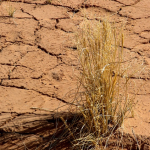
Natural disasters related to climate change have become more frequent and severe over the past three decades, causing damages to the agricultural sector and putting developing countries at risk of growing food insecurity, the UN has warned. Published ahead of the United Nations Climate Change Conference COP 21, which opens in Paris on Monday, a new study by the Food and Agriculture Organisation (FAO) sheds light on the impact of disasters on agriculture and food security. Between 2003 and 2013, droughts, floods, storms and other natural disasters caused worldwide damage worth $1.5 trillion. In developing countries, the agriculture sector bears much of the costs. “This year alone, small-scale farmers, fisherfolk, pastoralists and foresters - from Myanmar to Guatemala and from Vanuatu to Malawi - have seen their livelihoods eroded or erased by cyclones, droughts, floods and earthquakes,” said FAO Director-General José Graziano da Silva. Some 25% of the negative economic impacts hit the crop, livestock, fisheries and forestry sectors alone. In the case of drought, over 80% of the damage and losses affected the farming sector, particularly livestock and crop production. In Kenya, for example, drought between 2008 and 2011 caused significant losses in the food processing industry, especially grain milling and coffee and tea processing. In Asia, crop production losses caused by the 2010 floods in Pakistan directly affected cotton ginning, rice processing and flour and sugar milling, with the agricultural sector bearing half of the $10 billion in total damages and losses. Beyond production losses, the study shows how disasters can cause unemployment and erode incomes for small-scale family farmers, thus threatening rural livelihoods. The floods in Pakistan affected 4.5 million workers, most of them employed in agriculture, and almost 70% of farmers lost more than half of their expected income. These climate-related disasters are leading to increased food insecurity for many of the world’s most vulnerable people, hampering efforts to eradicate hunger and poverty. The FAO therefore calls for more investment in disaster response and in adaptation to climate change to make the farming sector more resilient. Although the livelihoods of 2.5 billion people worldwide depend on agriculture, only 4.2% of total official development assistance was spent on farming between 2003 and 2012, missing a UN target of spending 10% on agriculture. (ab)
25.11.2015
Agroecology in Africa addresses climate change, hunger and poverty
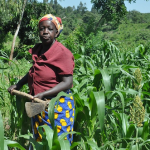
An agroecological revolution has been working its way across the African continent, helping to secure farmers’ livelihoods, new research shows. The Oakland Institute, a US-based policy think tank, has released 33 case studies that shed light on the tremendous success of agroecological agriculture in Africa in the face of climate change, hunger, and poverty. “These case studies provide irrefutable facts and figures on how agricultural transformation – respectful of the farmers and the environment – can yield immense economic, social, and food security benefits while ensuring climate justice and restoring soils and the environment,” said Anuradha Mittal, Executive Director of the Oakland Institute. The case studies present a large variety of techniques and practices used to achieve these benefits: plant diversification; intercropping; the application of mulch, manure or compost for soil fertility; the natural management of pests and diseases; agroforestry, the construction of water management structures and many other success stories. “We are told over and over that Africa needs a new Green Revolution, more synthetic fertilizers, and genetically modified crops,” said Frederic Mousseau, who coordinated the research. “These case studies debunk these myths and highlight the multiple benefits of agroecology, including affordable and sustainable ways to boost agricultural yields while increasing farmers’ incomes, food security, and resilience.” Published just a few days ahead of the United Nations Climate Change Conference in Paris, these case studies show how agroecology can contribute to stopping environmental degradation and fighting climate change. Agriculture, forestry, and other land use are responsible for at least a quarter of all greenhouse gas emissions from human activity. According to the International Panel on Climate Change, emissions from these sectors have almost doubled over the past 50 years. The use of synthetic fertilisers in industrial agriculture is the fastest growing source of agricultural greenhouse gas emissions. The Oakland Institute therefore calls for a urgently needed shift towards agroecological practices, a view supported by many farmers and civil society organisations in Africa. (ab)
23.11.2015
Brazilian court holds Syngenta responsible for killing of farm worker

A Brazilian court has found Swiss agrochemicals giant Syngenta responsible for the murder of a rural farm worker carried out by private armed militia. The 1st Civil Court of Cascavel ruled that the company must pay compensation to the family of Valmir Mota de Oliveira (aka Keno) for the moral and material damages caused, as well as for the attempted murder of Isabel do Nascimento de Souza, another victim. Valmir Motta, a regional leader of the Landless Rural Workers Movement (MST) was killed during protests at a Syngenta research farm in the southern state of Parana back in October 2007. Activists had occupied the farm which they said illegally produced genetically modified crops within an environmental protection zone around the famous Iguacu water falls. Heavily armed militiamen of NF Segurança, a security service used by Syngenta, showed up at the farm, killing Keno and injurying several other protesters. The case was taken to court in 2010 to determine what role Syngenta played in ordering the militia to drive away the peasants. In his sentence, published on November 17 in the Paraná State Official Gazette, the judge found that what happened on Syngenta’s property was “a massacre disguised as repossession of property”. Syngenta claimed that the attack was carried out by militia acting on the orders of landowners rather than the company but the judge ruled that “bad choice in outsourcing security services, as well as the indirect funding of illicit activities, is a factor that generates civil liability”. The sentence was welcomed by social movements as a step forward in holding companies accountable for human rights violations: “Transnational companies currently have considerable freedom to operate on a transnational basis, but there are no national or international norms or mechanisms sufficient to oblige companies to respect human rights or to hold them accountable for cases of human rights violations,” said Fernando Prioste, a lawyer of human rights organisation Terra de Direitos accompanying the case. He described the Syngenta sentence as an exception to this rule. The court sentence is not yet definitive as Syngenta could appeal to the Paraná State Court of Appeals. (ab)
19.11.2015
Antibiotics used in livestock pose risk to kids’ health, US doctors warn
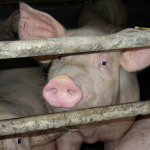
The unnecessary use of antibiotics in food-producing animals is endangering medicine’s ability to treat life-threatening infections in young patients, the American Academy of Pediatrics (AAP) warns in a new report. According to the authors, “The overuse and misuse of antimicrobial agents in veterinary and human medicine is, in large part, responsible for the emergence of antibiotic resistance. Approximately 80% of the overall tonnage of antimicrobial agents sold in the United States in 2012 was for animal use, and approximately 60% of those agents are considered important for human medicine.” The report says most of the use involves the addition of low doses of antimicrobial agents to the feed of healthy animals over prolonged periods of time to promote growth and increase feed efficiency or at a range of doses to prevent disease. “These nontherapeutic uses contribute to resistance and create new health dangers for humans,“ the authors warn, since this often leaves the drugs ineffective when they are needed to treat infections in people, especially in young patients. “Children can be exposed to multiple-drug resistant bacteria, which are extremely difficult to treat if they cause an infection, through contact with animals given antibiotics and through consuming the meat of those animals,” said lead author Jerome A. Paulson. According to the latest figures from the Centers for Disease Control and Prevention, at least 2 million Americans become infected with bacteria that are resistant to antibiotics and at least 23,000 people die each year as a direct result of these infections. For most types of infections reported, the highest incidence was among children younger than 5 years old. “Like humans, farm animals should receive appropriate antibiotics for bacterial infections," Dr. Paulson said. “However, the indiscriminate use of antibiotics without a prescription or the input of a veterinarian puts the health of children at risk.” The pediatricians underline that urgent action is needed to make sure that antibiotic agents are used in food-producing animals only to treat and control infectious diseases and not to promote growth or to prevent disease routinely. However, the authors are concerned that a voluntary Food and Drug Administration initiative and measures proposed by members of Congress to reduce the drugs’ nontherapeutic use have met with opposition from the agriculture and farming industry. (ab)
